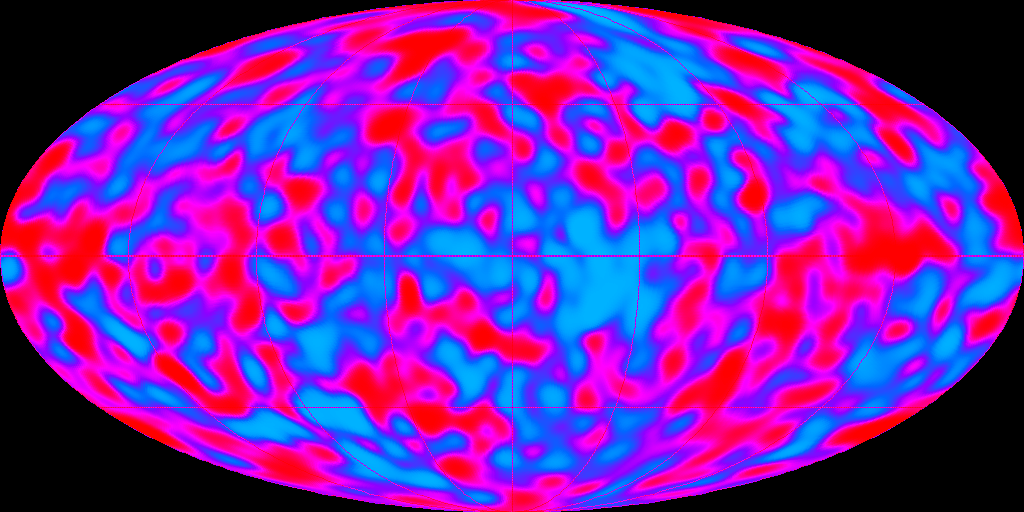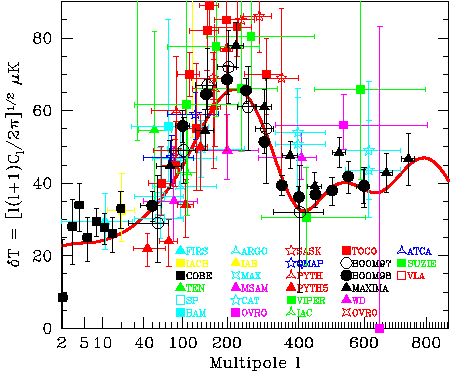

This famous picture shows a map of the temperature of the Universe when it was only about 300,000 years old (compared with its current age of around 15 billion years!). The map is rather like a map of the world - in that a spherical surface (i.e. the Universe in all directions around us) has been stretched out and flattened onto the plane. It shows "ripples" in the Microwave Background radiation: the photons of light emitted at the epoch when the Universe became cool enough for neutral hydrogen gas to form, allowing the light to stream freely towards us - rather like a fog clearing. The different colours reveal temperature variations of a few hundred thousandths of a degree - indicating that the Universe was almost completely uniform in temperature (and density) at this very early time. The tiny variations in temperature are very important, however, as they are the seeds of the large scale structure which we see today: galaxies and clusters of galaxies. The patches of the Universe which, at an age of 300,000 years were already slightly more dense than their surroundings, gradually attracted more and more matter towards them, and eventually - after several billion years - became dense enough to begin the process of galaxy formation. The map above was made by the Cosmic Background Explorer (CoBE) satellite, launched in 1989.
In the decade since CoBE was launched many more ground-based experiments have "taken the temperature" of the fledgling Universe, but with ever-increasing precision and resolution. (A `patchwork' of recent results is shown below, indicating the size of the temperature variations on different scales, together with theoretical model curves. These data were compiled by Max Tegmark). These measurements allow us to determine - with unprecedented accuracy - many important properties of the Universe in which we live: e.g. its age, size and expansion rate, how much matter it contains and the nature of that matter, and whether the Universe will continue to expand forever.
